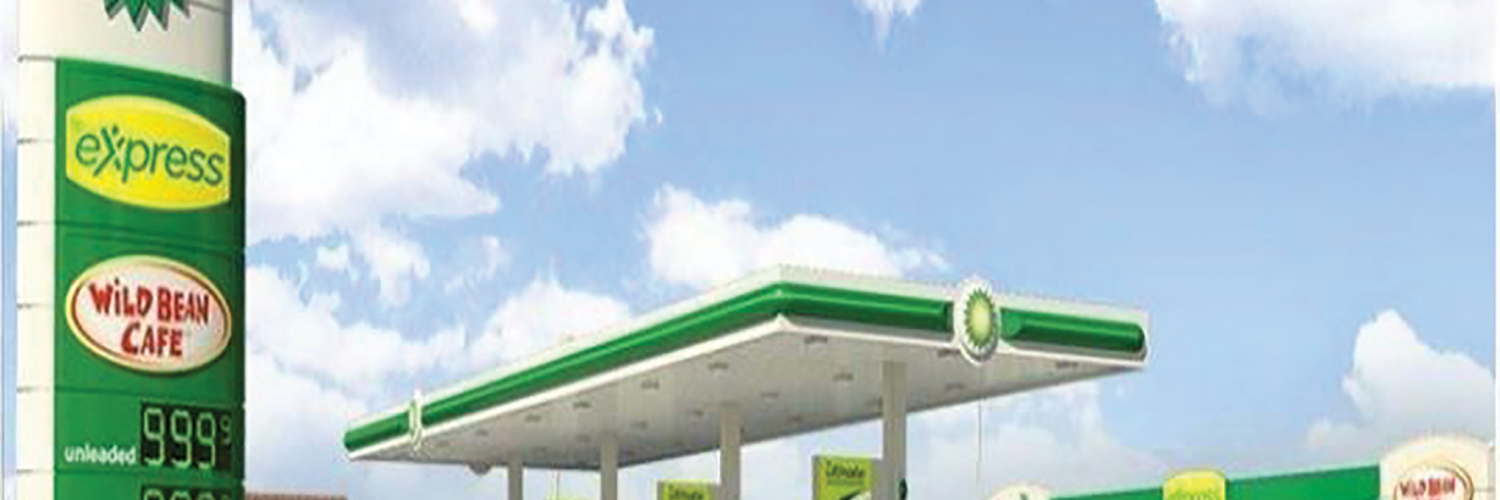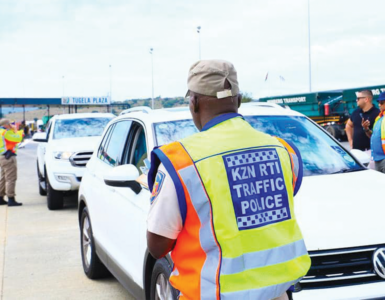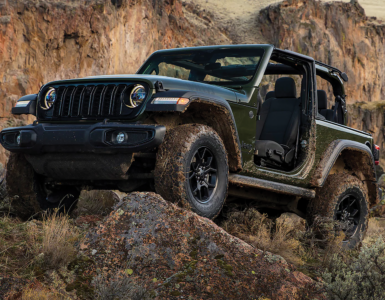ELECTRIC: Already 50% of their revenue is non-fuel and scores of rural filling stations were leaving the industry every year
By Motoring Reporter
What happens to petrol stations when every car is electric? “By 2030, the car market could be about 20% EV, which means there will still be a huge demand for fossil fuel,” says William Bannister, CEO of MFG, which owns more than 900 sites. However, by 2035, he expects EVs to represent 60% of the market, and the figure will be rising.
That’s why he’s already beginning the job of adapting MFG sites to offer rapid charging beside fuel, with the potential for the former to replace the latter as demand increases.
“We’re spending £400 million in the next few years to deliver this dual-fuel strategy,” says Bannister. “We’ve looked at 700 of our sites that we know can take dual fuel straight away, with 250 of them awaiting ‘energisation’. Our strategy is to do hubs: multiple, well-maintained chargers with good uptime – typically over 98% working – and which are safe and well lit.” With a charging hub costing around £1m, many independents, unable to afford such an investment, will close. Still, like pubs, filling stations have been shutting up shop for a long time. In 1979, there were 40,000 filling stations, but that same year Tesco started selling fuel. Other supermarkets followed, and by the early 2000s around 400 independent and rural filling stations were leaving the industry every year.
Today, there are just 8400 filling stations, including around 1000 small independents – what the industry calls white-pole stations – in rural areas. BP reckons there’s still a 25% contraction to come.
You’d think their proximity to the stores would protect the supermarket filling stations, but even they are feeling the squeeze as the discounters increase their market share. In fact, MFG is in talks to buy Morrisons forecourts and establish more EV charging hubs as the supermarket seeks to raise cash and pay off debts. The pace of change is taking even the experts by surprise. “Just a few years ago, who would have known the indies would be buying supermarket sites or that Covid would [make] demand for fuel fall as more people worked from home?” asks Petrol Retailers Association executive director Gordon Balmer.
“One of the biggest changes has been in shopping habits. For example, more frequent, top-up shops have replaced the big Saturday-morning shop for a lot of people. This is affecting supermarket sales but is an opportunity for filling stations.”
Anyone who has sat waiting on a forecourt for the driver of the car in front to do their shopping before paying for their fuel knows how that ‘opportunity’ feels.
“Twenty years ago, every street had an off-licence, but many have gone, and now we have them on forecourts,” says Bannister. “So now we’re the local off-licence – and the local Costa or Starbucks, and even the dry cleaners.”
As EV take-up grows, drivers can expect more of this diversification. And all the more so with people being able to recharge their EV at home, at their destination or at other locations: filling stations will no longer provide all the miles.
“Already, for some of our members, 50% of their revenue is non-fuel,” says Balmer. “We might one day change our name to the Roadside Retail Association to reflect the changes ahead.”
What the future holds for Shell
We speak to Bernadette Williamson, general manager, Mobility UK, at Shell, who shares with us the oil giant’s plans for the future.
How will Shell’s fuel stations change?
“By the end of this year, we aim to have more than 700 fast and ultrafast charge points, but globally, by 2030, 200,000 charge points. Meanwhile, we will continue to offer traditional fuels, so by the end of 2023 we will have around 15 hybrid hubs with all of our energy and retail services on one site.”
What will the customer experience be like?
“Our site in Shenzhen, China, serves more than 3300 EVs daily and offers a range of services including a Shell Café, vending machines and a drivers’ lounge. In the UK, our Fulham EV-only hub offers a seating area, a Costa Coffee store and a Little Waitrose for waiting EV drivers.”
How will demands for electric power and petrol and diesel fuel change as we approach 2035?
“Electric vehicle charging and alternative fuels are a rapidly growing part of our business, but petrol and diesel vehicles will still be driven for years to come.” Business Insider reports that with automakers going all in on EVs experts predict hundreds of thousands of jobs in the auto industry are going to be lost with the EV transition.
Ford CEO Wants to Abolish the Dealership Experience as We Know It and companies like VW predict that EVs will require 30 percent fewer workers than traditional ICE vehicles. Any way you look at it, the more EV sales rise, the more jobs are lost.
MOTORING:
Briefs
SA TO PRODUCE EVs 2026
South Africa’s government has made it clear that due to the current energy crisis, and coal-dominated grid, it is too early to encourage local consumers to buy electric cars.
Upon releasing the country’s Electric Vehicle White Paper this week, the Minister of Trade and Industry, Ebrahim Patel, said that stimulating the local market would only happen during the second phase of the country’s EV strategy, which could take up to seven or eight years to materialise. During the first phase the Department of Trade, Industry and Competition (DTIC) will seek to encourage and incentivise the local production and export of electric vehicles.
But when can we expect to see the first electric vehicles to start rolling off South African assembly lines? Having consulted with the various motor manufacturers, Minister Ebrahim Patel anticipates that the first EVs are likely to be produced from as early as 2026, albeit in limited numbers.
SUZUKI BUCKS TREND
South Africans are turning to Suzuki in ever-greater numbers. The Japanese vehicle manufacturer sold 4 381 vehicles in November, recording a 2% rise over November 2022, and bucking the trend that has seen the overall vehicle market decline by 13.4% in the same month. More importantly perhaps, was the massive jump in dealer sales. Of its total vehicle sales, the Suzuki dealer network sold 3 947 units. This is a new record in South Africa, and it beats the previous record of 3 857 sales, set by Suzuki dealers a mere 30 days ago.
This is the fourth consecutive month of above-average sales for Suzuki. It inversely correlates with the overall vehicle market, which has recorded its fourth consecutive month of declining sales.
ITS PRIUS ALL THE WAY
Toyota Prius Hybrid car has won Japan Car of the year Award for 2023-2024 The Prius got 360 votes from the Japan Car of the Year (JCOTY) committee trouncing the first runner-up the BMW X1 with 150 votes. While the Honda ZR-V finished third with 100 votes.
In 2023 the JCOTY introduced a new voting system giving jurors 16 votes to distributed between their three best cars. In the first round of voting in early November, jurors selected the “10 Best” cars for 2023 which included the Toyota Prius, Toyota Alphard, Nissan Serena, Honda ZR-V, Subaru Crosstrek, Mitsubishi Delica Mini, Abarth 500e, BMW X1, Maserati Grecale, and Volkswagen ID.4.
TO RUSSIA FROM
KRYGYSTAN
German carmakers such as Volkswagen, BMW, Porsche, and Mercedes have increased the amount of deliveries of their cars and spare parts to Central Asian and South Caucasus countries after announcing their withdrawal from Russia, reported The Telegraph. Data from the Institute of International Finance (IIF) show that exports of German cars and spare parts to Kyrgyzstan increased by 5,500% in the first nine months of this year compared to the same period in 2019.
The export of German auto parts to Armenia, Kazakhstan and Georgia increased by 720%, 450% and 340%, respectively. This indicates that Russia uses third countries to circumvent Western sanctions and ensure access to foreign goods, the IIF notes.
ONE MORE THING….
The AA’s research found that many Brits shared that experience in their youth, being told not to put the lights on while the car was moving.
Well, those kids can now crack out the statute books and fight back against their parents’ stern words as the widely-held belief is actually a misunderstanding of the law. An AA spokesperson said: “It’s something which lots of people think is a fact but there’s no law against driving with your interior lights on.” While the light in itself is not a legal issue, if you are caught driving dangerously and the distraction from the lamp is found to be the cause, it could land you in hot water.
You could find yourself in the dock under laws against driving while distracted, in the same way that you might be collared for using a phone or having your view out of the windscreen obscured.-The Sun UK






